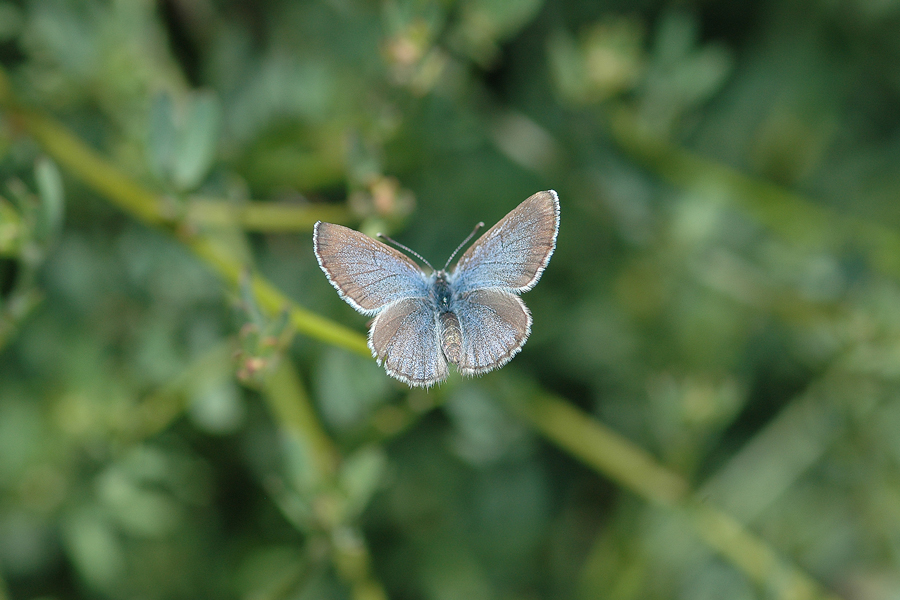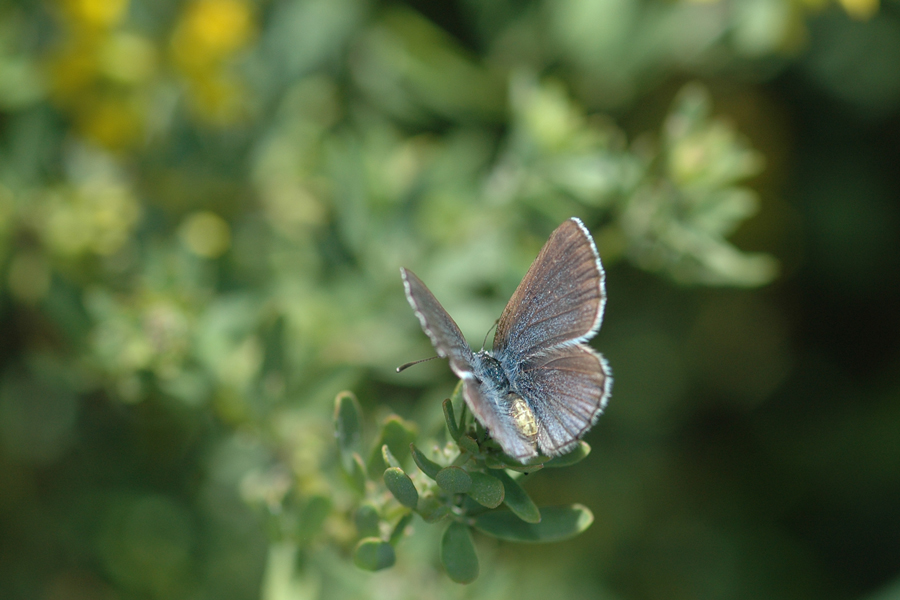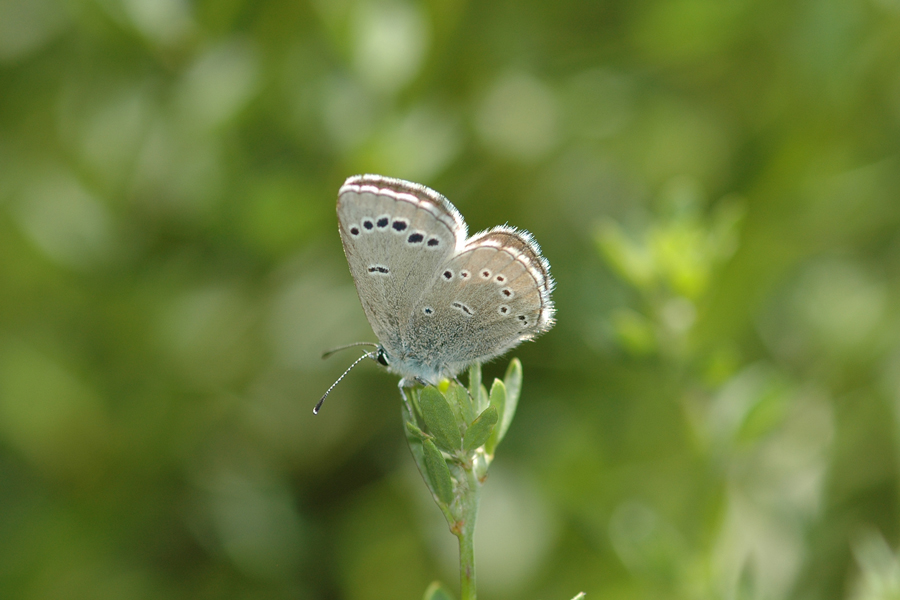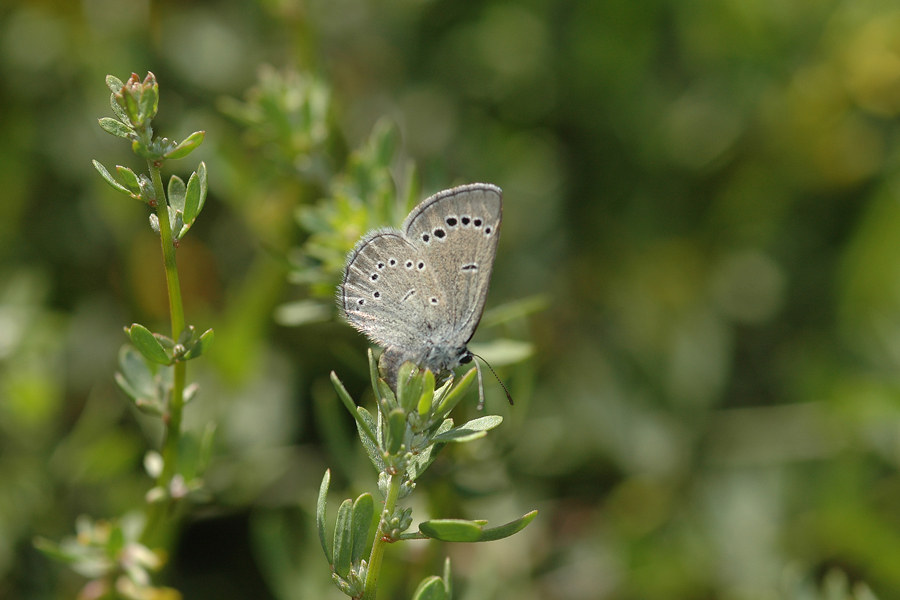Glaucopsyche lygdamus palosverdesensis
Palos Verdes Blue
This blue is best-known for its rediscovery in 1994 by Rudi Mattoni after ca. ten years during which the butterfly was thought to be extinct. A captive breeding and revegetation program was then initiated and seems to have been successful (I saw it at two locations but haven't returned in over ten years). G. lygdamus palosverdesensis was named in 1977 by Edwin Perkins and John Emmel. Differences between the population on the Palos Verdes Peninsula and subspecies australis and incognita include size, ventral spotting, and wing coloration. It was said to use Astragalus trichopodus var lonchus exclusively, in contrast to australis' use of Acmispon glaber (deerweed) and incognita's use of several lupine species. We know now that palosverdesensis also uses A. glaber. Its relatively early flight period (Jan-Mar) is also distinctive. Not long after being described, it was listed under the Endangered Species Act (in 1980), and seemed to have disappeared due to habitat destruction after a few were seen in March, 1983. Mattoni and two others, engaged in survey work, happened upon a small colony a decade later at a Defense Fuel Supply Point (DFSP) in San Pedro. A search for other colonies failed to turn up any evidence of the butterfly; apparently the blues at the DFSP were the last stand of this population, which Mattoni believed had been evolving in isolation for at least 10,000 years.




